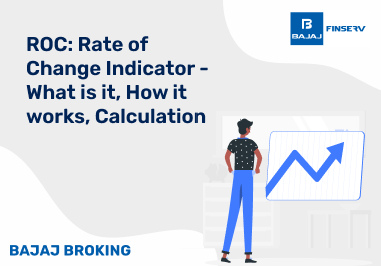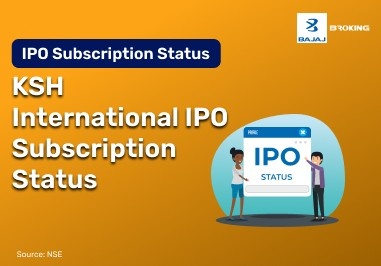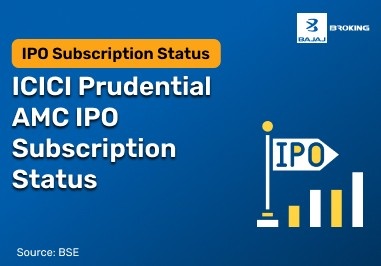At first impression, the name "Bank Nifty" sounds like one of those sophisticated NSE things. But in reality, it's not as hard as it looks.
Bank Nifty is basically a group of twelve big banking equities, some of which are public and some are private. The index goes up when certain banks do well and down when they don't.
This means that Bank Nifty is more than just a number. It keeps track of how people feel about India's banking sector. Banks are a big part of lending money to enterprises, companies, and people, therefore their performance frequently gives a better picture of the economy as a whole.
The index's price changes are based on thousands of deals, which gives a real-time picture of how confident the market is in banking. That's why traders, analysts, fund managers, and even economists pay so much attention to it.
Bank Nifty started in 2003 and has since become one of the most closely watched indexes. It is not only a way to measure performance, but it is also a major factor in derivatives trading, technical strategies, and benchmarking. In a lot of respects, it reflects the country's financial backbone.
Understanding Bank Nifty in Detail
People often assume Bank Nifty is just “banks put together.” Not quite. There’s a method. The NSE uses the free-float capitalisation method. Only shares available for trading count — promoter holdings or locked shares don’t make the cut.
That’s what keeps it honest. Bigger, more liquid banks like HDFC Bank and ICICI Bank carry greater weight, while smaller players such as Canara Bank or AU Small Finance Bank nudge it only slightly. The balance feels more practical than arbitrary.
Why does this matter? Because it reflects what the market can actually trade. When Bank Nifty climbs, optimism is visible. When it falls, sentiment is clearly turning. It’s not theory — it’s grounded in real liquidity.
That’s why it’s so closely tracked. Watching Bank Nifty is a bit like checking the heartbeat of India’s financial system — quick, restless, sometimes erratic, but always telling.
Components of Bank Nifty
List of Bank Nifty Stocks: As per the information available on the NSE’s website, these stocks are the constituents of Bank Nifty.
Weightage of Each Stock in the Index: The top constituents of Bank Nifty by their weightage are shown in the table below:
| Company's Name | Weightage (%) |
| HDFC Bank Ltd. | 28.1 |
| ICICI Bank Ltd. | 23.81 |
| State Bank of India | 9.53 |
| Kotak Mahindra Bank Ltd. | 9.37 |
| Axis Bank Ltd. | 9.32 |
| IndusInd Bank Ltd. | 5.68 |
| Federal Bank Ltd. | 2.86 |
| Bank of Baroda | 2.74 |
| AU Small Finance Bank Ltd. | 2.46 |
| Canara Bank | 2.23 |
How Bank Nifty Works?
Here’s the thing — how Bank Nifty works is simpler than many expect. It’s like a mirror. When banking stocks rise, the index does too. When they stumble, the index dips. No overthinking, just sector performance in motion.
Traders rely on it for strategies, especially in options, where liquidity runs high. Analysts track its charts, drawing lines of resistance and support. For many, Bank Nifty is less a theory and more a live, breathing signal.
Benefits of Investing in Bank Nifty
The benefits of investing in Bank Nifty are quite practical. Diversification is the first. Instead of betting on one bank, you get exposure to twelve. If one underperforms, others can soften the impact.
Liquidity is another plus. Bank Nifty is heavily traded, so entering or exiting positions is smoother than with less active stocks. It’s one of those indices where volume rarely dries up.
Then there’s exposure to India’s financial institutions — HDFC, ICICI, SBI, and more. These names set the pace for the sector. Owning the index is like holding a snapshot of the stronger players together.
And of course, hedging. Futures and options linked to Bank Nifty allow traders to manage risks in volatile times. For investors, it doubles up as a benchmark to measure how their funds or portfolios stack against the sector.
How Bank Nifty Index is Used?
Bank Nifty has many uses. In simple words, it’s like a health check. If it’s rising, confidence in banks is steady. If it’s falling, something is weighing on the sector.
Investors often compare individual stock returns against it. If a bank consistently trails the index, maybe it’s underperforming. If it outpaces it — and valuations make sense — then it deserves a closer look.
Fund managers also track it closely. Banking ETFs and mutual funds use Bank Nifty as a benchmark. If a fund can’t beat it, it’s seen as lagging. That’s why managers measure themselves against this index again and again.
So it isn’t just a number. Bank Nifty functions more like a compass — guiding investors, pointing to relative strength or weakness. It’s the kind of reference point that keeps the sector honest.
Factors Influencing Bank Nifty Trading
Domestic cues influence Bank Nifty:
Strong GDP growth increases credit demand, boosting banks.
High inflation erodes margins and negatively impacts valuations.
Interest rates are key drivers:
Rising rates can initially improve margins.
Excessive tightening makes borrowing costly, slows growth, and reduces loans.
The index reacts sharply to rate changes, sometimes unexpectedly.
Global trends matter:
Bullish global markets attract foreign inflows, lifting Indian banks.
Global crises or slowdowns reverse flows, dragging the index down.
Geopolitical events have immediate effects:
Wars, sanctions, and supply chain disruptions affect borrowing needs.
Bank Nifty reflects these global tremors quickly, showing sensitivity to worldwide events.
Risks Involved in Trading Bank Nifty
High volatility:
Bank Nifty focuses only on banks, unlike Nifty 50 which spreads risk across sectors.
This concentration makes it more susceptible to sector-specific shocks.
Sensitive to small changes:
RBI policy tweaks, rising NPAs, or new regulations can jolt the index.
Broader indices absorb such news better, while Bank Nifty often amplifies the impact.
Derivatives add risk:
Futures and options tied to Bank Nifty are popular.
Leverage multiplies both profits and losses, making mistimed bets potentially brutal.
Discipline is essential:
Stop-losses, hedging, and strict trading strategies are crucial.
The index offers opportunities but acts as a double-edged sword for the unprepared.
Conclusion
So, where does that leave us? By now, the Bank Nifty meaning should feel clearer. It’s not just a list of stocks but a barometer of India’s banking sector, and by extension, a glimpse into the economy itself.
The benefits of investing in Bank Nifty — diversification, liquidity, exposure — are real. But the risks are equally real. Like any market tool, its usefulness depends less on what it is and more on how wisely it’s used.














